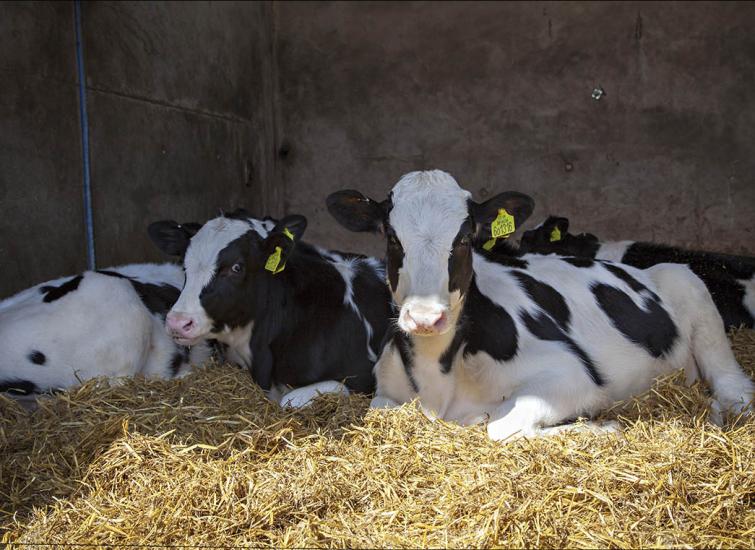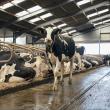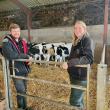Calf Pneumonia Prevention Strategies
As calf pneumonia becomes more prevalent in the winter months, Liz Newman, our heifer rearing specialist discusses some prevention strategies...

Figures taken from AHDB estimate that calf pneumonia is costing the industry approxiamately £50 million pounds a year. With individual cases costing £30- £80 per case, it's worth looking at preventation strategies. It's also important to note that respiratory diseases such as pneumonia can affect the cow's performance for the entire of its life, with reduced growth rates and lower milk yields.
Calf pneumonia or Bovine Respiratory Disease (BRD) is a multi-factorial disease which results in inflammation and damage to the tissues of the lungs and respiratory tract. It usually occurs in young housed cows, with winter being a particular issue if ventilation isn't adequate.
So what are the signs that your calves might have pneumonia?
- Coughing
- Nasal Discharge
- Increase in breathing rate/effort
- Raised Temp >39.5°c (103F)
Pneumonia can be due to a number of different factors and can be categorised as:-
Aspiration
This form of pneumonia occurs when any solid material is inhaled and enters the lungs. The most common cause is improper use of esophageal feeders when administering colostrum. Aspiration also may occur during a difficult birth when a calf inhales some meconium (first manure) or amniotic fluid. A common source of aspiration in older calves is nipples with holes that are too large, which allow calves to consume milk too quickly.
Bacterial
The three primary organisms that cause bacterial pneumonia in calves are Pasteurella multocida, Mannheimia hemolytica, and Mycoplasma species. “Bacterial infections that occur in the first few days of life result from infection within the dam, aspiration or contaminated colostrum. As calves grow older, new infections typically are acquired from the environment or other sick calves.”
Viral
BRSV, IBR, PI3 and BVDV all can instigate pneumonia in calves. “A viral pneumonia then predisposes calves to acquiring bacterial pneumonia.”
So what can you do to reduce the risk?
- Make colostrum a top priority!!
Newborn calves rely on the passive absorption of 150g to 200g of colostral immunoglobulins (IgG) within the first few hours after birth, to provide protection against infectious diseases, such as pnemonia, early. It’s really important that your newborn calves, not only get the colostrum they need, but they also get it quickly. The quality of the colostrum is also key, so testing your colostrum is really important. - Ensure good nutrition
Promoting a good immune system starts with good nutrition. As part of our calf rearing programs we recommend a skim calf milk replacer which contains natural vitamin E which is 7 times more available to the calf than synthetic, promoting an improved immune system. - Assess the environment
Think about your calves environment, where could harbour germs? Is your ventilation system adequate? Are there any drafts? Do you have mixed calf groups? What temperature is it in the barn/ housing system? - Ensure cleanliness
- Implement good calf husbandry practices
- React quickly to signs of sickness and isolate sick calves
- Implement a vaccination programmes
We'd recommend you speak with your vet about your farm specifically, as every farm is different.
If you'd like any further information on calf pneumonia and prevention strategies or you need any help in assessing your calve's environment, then please just give Liz Newman a call on 07722 147982 or email liz@arn-ltd.com.
〈 BACK














